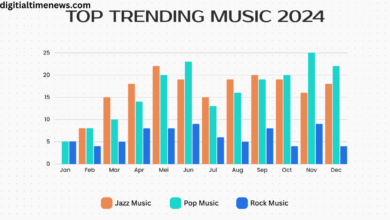sci fi robot nyt The realm of science fiction has long captured the human imagination, weaving narratives about robots that evoke wonder, fear, and philosophical inquiry. The New York Times, a beacon of cultural discourse, has played a significant role in shaping perceptions about robotics through its articles, features, and reviews. From exploring the ethical implications of AI to celebrating groundbreaking technological advancements, the coverage of sci fi robot nyt reflects our evolving relationship with technology. In this article, we will explore how the New York Times portrays sci-fi robots, their implications for society, and the potential future they promise.
The Evolution of sci fi robot nyt in Literature and Media

sci fi robot nyt have undergone a remarkable transformation since their inception. Initially portrayed as mere machines devoid of emotions, they have evolved into complex characters that mirror human traits. The New York Times has chronicled this evolution through various articles, highlighting significant literary works and cinematic milestones that have defined the genre.
In early sci-fi literature, robots were often depicted as villains or tools for humanity’s downfall, reflecting societal fears of technological advancement. Authors like Isaac Asimov introduced more nuanced perspectives, showcasing robots as potential companions and helpers rather than threats. Asimov’s famous Three Laws of Robotics offered a framework that challenged readers to consider the ethical implications of creating intelligent machines. The New York Times has featured reviews and discussions on Asimov’s works, illustrating how they laid the groundwork for more compassionate portrayals of robots in modern narratives.
The portrayal of robots in films and television has also evolved. Classics like “Metropolis” and “Blade Runner” raised questions about identity, consciousness, and morality. The New York Times has examined these films’ cultural impact, noting how they resonate with contemporary issues such as artificial intelligence and human rights. By analyzing the portrayal of robots in these mediums, the Times encourages readers to reflect on their values and the future of technology.
Ethical Implications of Robotics
As robots become increasingly integrated into our lives, ethical considerations surrounding their development and use have come to the forefront. The New York Times has actively engaged in discussions about the moral responsibilities of scientists, engineers, and policymakers in shaping the future of robotics. Articles have explored various scenarios in which robots could either benefit or harm society, emphasizing the need for responsible innovation.
One pressing concern is the potential for robots to replace human jobs. The Times has reported extensively on automation’s impact on the workforce, raising questions about income inequality and job displacement. While robots can improve efficiency and productivity, their widespread adoption could lead to significant social upheaval. The New York Times highlights stories of workers who have been affected by automation, illustrating the human side of this complex issue.
Additionally, the ethical treatment of robots themselves has emerged as a topic of interest. As robots become more advanced and lifelike, should they be afforded rights or protections? The New York Times has featured philosophical discussions around this question, prompting readers to consider what it means to be sentient and whether robots, as products of human ingenuity, deserve ethical consideration. This discourse encourages a deeper understanding of our responsibilities towards the creations we design.
Robots in Pop Culture: Reflection of Societal Values
The portrayal of robots in pop culture often reflects societal values, fears, and aspirations. The New York Times has highlighted various trends in how robots are represented in films, television shows, and literature, showing how these narratives can serve as mirrors for contemporary issues.
For instance, in recent years, robots have increasingly been depicted as companions rather than adversaries. This shift indicates a growing acceptance of technology in our lives, as seen in shows like “Westworld” and films like “Her.” The New York Times has analyzed these portrayals, discussing how they challenge traditional notions of relationships and human connection. The emotional bonds formed between humans and robots in these narratives raise questions about love, loyalty, and the nature of companionship.
Conversely, dystopian narratives featuring robots often serve as cautionary tales, warning us of the potential consequences of unchecked technological advancement. Films like “Ex Machina” and “I, Robot” explore themes of control and rebellion, reflecting societal anxieties about the rise of artificial intelligence. The New York Times has engaged with these themes, encouraging readers to reflect on the balance between innovation and ethical considerations. By examining how robots are portrayed in popular media, the Times provides insight into the cultural zeitgeist and encourages critical thinking about our technological future.
The Future of Robotics: Possibilities and Challenges
As we look to the future, the potential applications of robotics are vast and varied. The New York Times has published articles exploring emerging technologies that promise to reshape industries and everyday life. From healthcare to transportation, robots are poised to revolutionize how we live and work.
In healthcare, robots are already making strides in surgery, diagnostics, and patient care. The Times has featured stories about robotic-assisted surgeries that improve precision and reduce recovery times. By highlighting these advancements, the Times emphasizes the positive impact of robots on human health and well-being. However, it also raises questions about the accessibility of these technologies and the potential for widening health disparities sci fi robot nyt.
In transportation, self-driving cars represent another frontier in robotics. The New York Times has reported on the ongoing developments in autonomous vehicle technology, discussing the implications for safety, urban planning, and environmental sustainability. While self-driving cars hold the promise of reducing traffic accidents and emissions, the transition to this new mode of transportation presents challenges that must be addressed sci fi robot nyt.
The ethical and regulatory frameworks surrounding these technologies are still in development. The New York Times has been a platform for discussions on how best to navigate these challenges, emphasizing the importance of collaboration among stakeholders. As robotics continue to advance, it is crucial for society to engage in open dialogues about the direction we want to take sci fi robot nyt.
The Role of Science Fiction in Shaping Public Perception
Science fiction plays a pivotal role in shaping public perceptions of robotics and artificial intelligence. The New York Times has often highlighted the influence of sci-fi narratives in informing our understanding of technology and its implications. By presenting futuristic visions of society, these stories encourage us to contemplate the ethical and societal issues surrounding emerging technologies sci fi robot nyt.
One of the key contributions of science fiction is its ability to spark imagination and creativity. The New York Times has featured essays and interviews with authors and creators who emphasize the importance of speculative fiction in envisioning potential futures. These narratives not only entertain but also serve as cautionary tales that can guide policymakers and technologists in their decision-making processes sci fi robot nyt.
Moreover, science fiction can foster empathy by allowing us to connect with characters and scenarios that challenge our assumptions. The New York Times has examined how stories featuring robots and AI can evoke emotional responses, prompting readers to consider the human experience in a technologically driven world. By engaging with these narratives, we can better understand the complexities of our relationship with technology sci fi robot nyt.
Conclusion: The Ongoing Dialogue About Robots and Society
The New York Times has been instrumental in fostering an ongoing dialogue about the role of robots in our lives. Through its coverage of sci fi robot nyt, the Times has explored the ethical implications, societal reflections, and potential futures that arise from our interactions with technology. As we continue to navigate the complexities of a rapidly changing world, it is essential to engage in these discussions, considering the impact of our choices on both present and future generations sci fi robot nyt.
As robots become more integrated into our daily lives, the narratives we create and consume will shape our understanding of technology’s role in society. The New York Times serves as a vital platform for this discourse, encouraging readers to reflect on their values and the direction they want for our technological future. By engaging with the themes of science fiction, we can better prepare for the challenges and opportunities that lie ahead, ensuring that our relationship with robotics is one rooted in responsibility and foresight sci fi robot nyt.
This article explores various facets of sci fi robot nyt as discussed in the New York Times, offering insights into their evolution, ethical implications, cultural reflections, and potential futures. With thoughtful analysis and expert commentary, the Times continues to shape our understanding of the intersection between humanity and technology sci fi robot nyt.




